School Highlights
Sussex County Community College serves 3,272 students (42% of students are full-time).
The college's student:teacher ratio of 14:1 is lower than the state community college average of 19:1.
Minority enrollment is 30% of the student body (majority Hispanic), which is less than the state average of 65%.
Quick Stats (2025)
- Enrollment: 3,272 students
- In-state tuition: $6,900
- Out-state tuition: $8,820
- Student:teacher ratio: 14:1
- Minority enrollment: 30%
- Source: Integrated Postsecondary Education Data System (IPEDS)
School Overview
The teacher population of 226 teachers has stayed relatively flat over five years.
Sussex County Community College
(NJ) Community College Avg.
Carnegie Classification
Associate's Colleges: High Transfer-Mixed Traditional/Nontraditional
Baccalaureate Colleges: Diverse Fields
Institution Level
At least 2 but less than 4 years
At least 2 but less than 4 years
Institution Control
Public
Private not-for-profit
Total Faculty
226 staff
439 staff
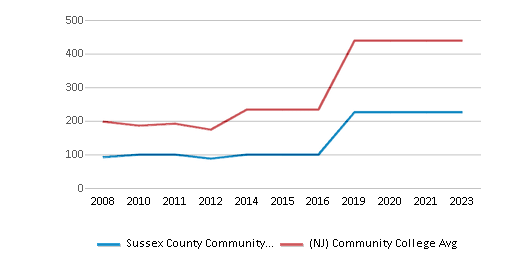
School Calendar
Student Body
The student population of Sussex County Community College has grown by 41% over five years.
The student:teacher ratio of 14:1 has increased from 10:1 over five years.
The Sussex County Community College diversity score of 0.48 is less than the state average of 0.77. The school's diversity has grown by 19% over five years.
Total Enrollment
3,272 students
1,067 students
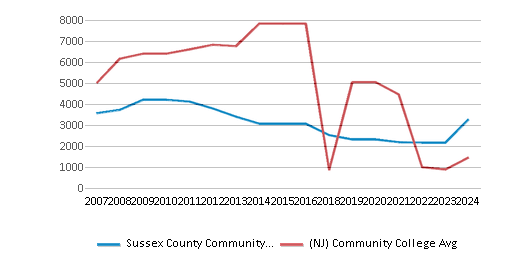
Student : Teacher Ratio
14:1
19:1
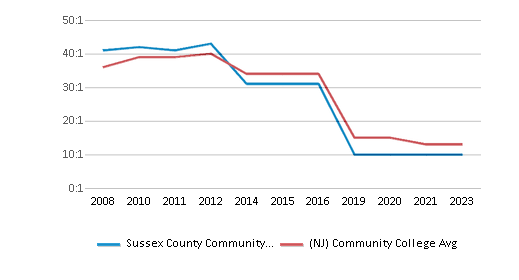
# Full-Time Students
1,371 students
699 students
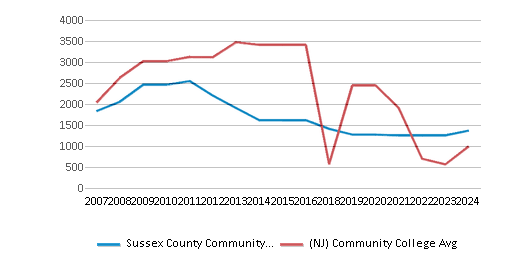
# Part-Time Students
1,901 students
1,319 students
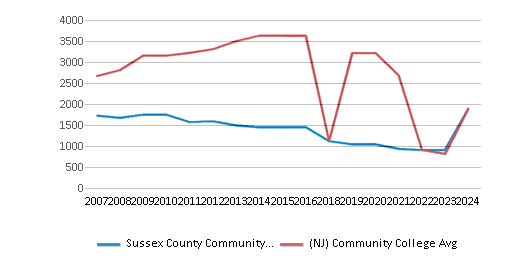
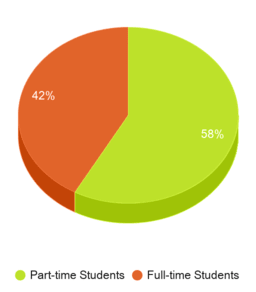
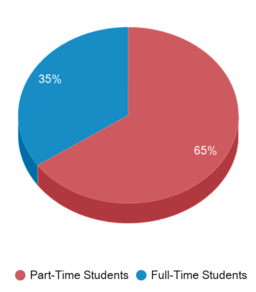
# Enrollment Undergraduate
327 students
327 students
# Full-Time Undergraduate Students
1,371 students
699 students
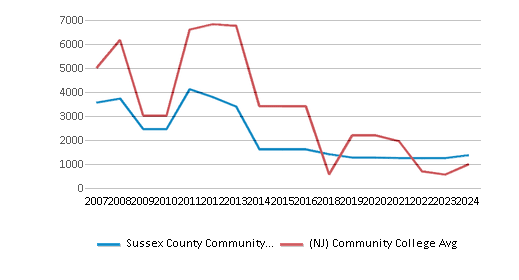
# Full-Time Graduate Students
n/a
50 students
# Part-Time Undergraduate Students
1,901 students
1,213 students
# Part-Time Graduate Students
n/a
6 students
Total Dormitory Capacity
n/a
20 students
% American Indian/Alaskan
n/a
n/a
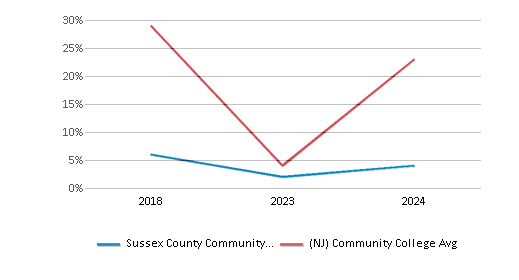
% Asian
2%
8%
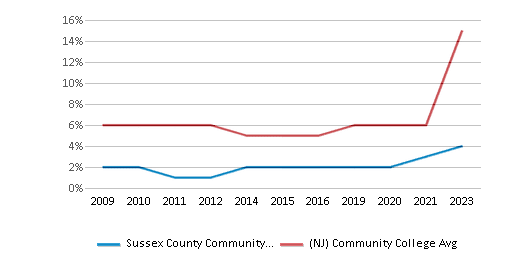
% Hispanic
16%
26%
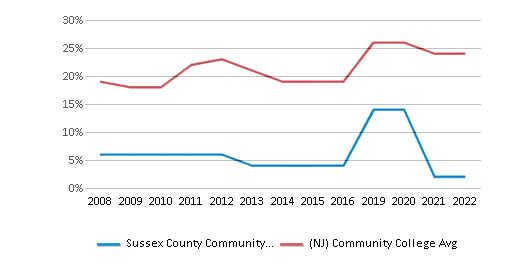
% Black
6%
15%
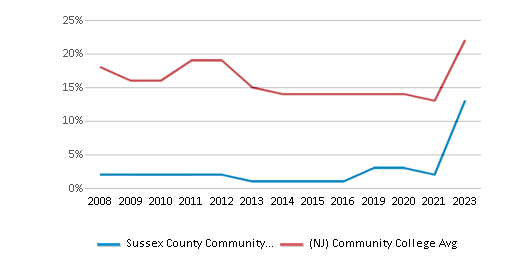
% White
70%
35%
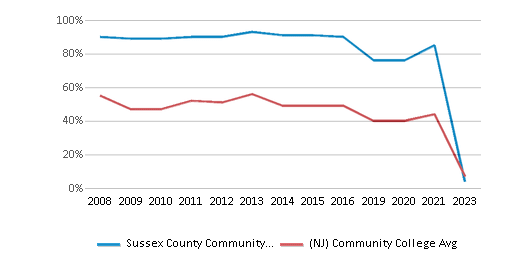
% Hawaiian
n/a
1%
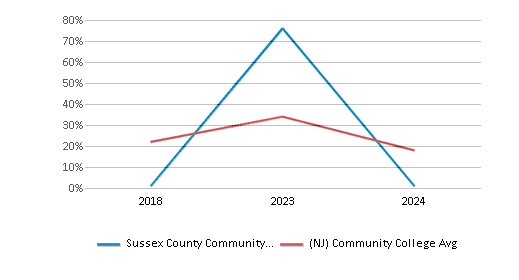
% Two or more races
5%
3%
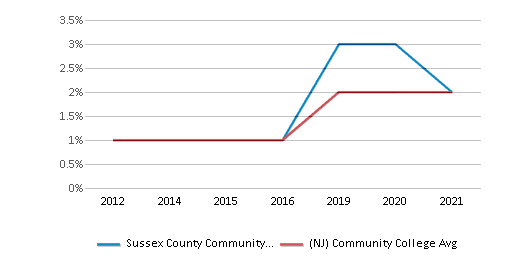
% Non Resident races
1%
2%

% Unknown races
1%
10%
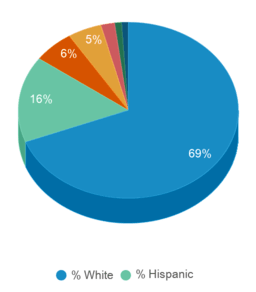
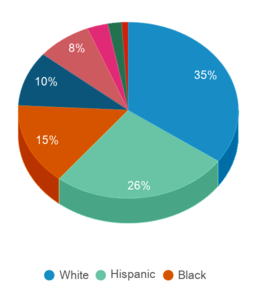
Diversity Score
0.48
0.77
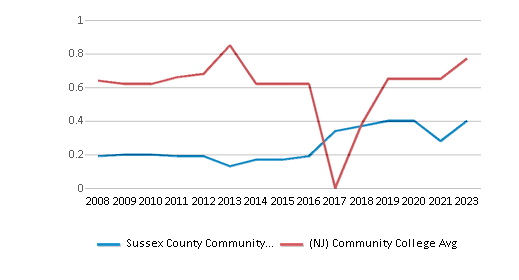
College Completion Rate (Students who graduate in less than 4 years)
0.3259%
0.3963%
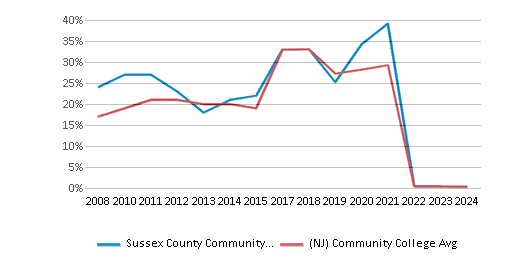
College Completion Rate (Students who graduate in 4 years or more than 4 years)
n/a
0.42%
Average Graduate Earnings (10 Years)
$35,400
$36,100
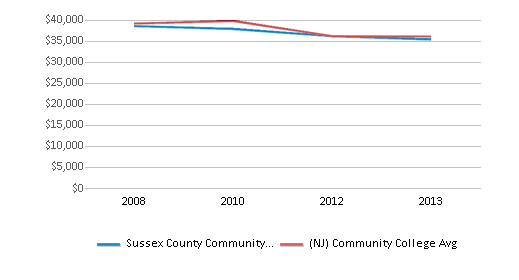
Tuition and Acceptance Rate
The public in-state tuition of $6,900 is more than the state average of $5,470. The in-state tuition has stayed relatively flat over four years.
The public out-state tuition of $8,820 is more than the state average of $7,575. The out-state tuition has stayed relatively flat over four years.
In-State Tuition Fees
$6,900
$5,470
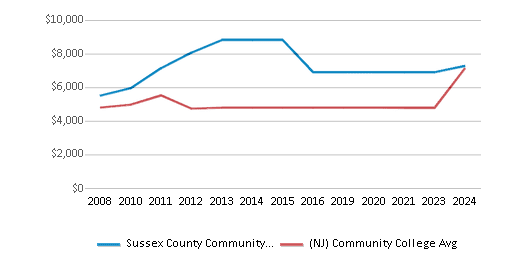
Out-State Tuition Fees
$8,820
$7,575
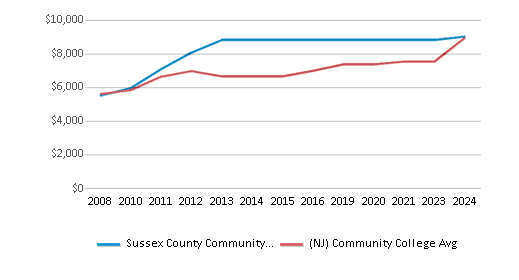
% Students Receiving Some Financial Aid
66%
87%
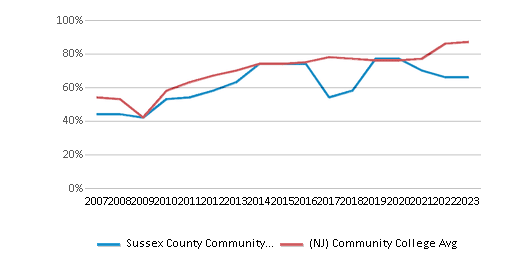
Median Debt for Graduates
$11,000
$11,000

Median Debt for Dropouts
$5,500
$5,500
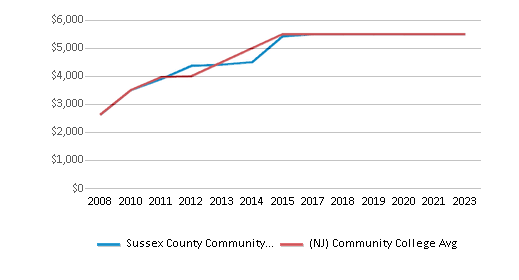
Acceptance Rate
n/a
76%
Source: 2024 (or latest year available) Integrated Postsecondary Education Data System (IPEDS)
Frequently Asked Questions
How much does Sussex County Community College cost?
Sussex County Community College's tuition is approximately $6,900 for In-State students and $8,820 for Out-State students.
Recent Articles

Obtaining Your Bachelor's Degree at a Community College
Explore the evolving landscape of community colleges offering bachelor's degrees, addressing affordability, accessibility, and workforce needs.

A to Z of Community College Certificates and Courses
From business and healthcare to technology and skilled trades, the article showcases the breadth of options available to students seeking to enhance their knowledge, develop new skills, or pursue career advancement.

What is a Community College?
This comprehensive guide explains what a community college is, its history, and its role in higher education. It covers the types of programs offered, differences from four-year colleges, benefits of attending, and important considerations for prospective students, providing valuable insights for those exploring educational options.











